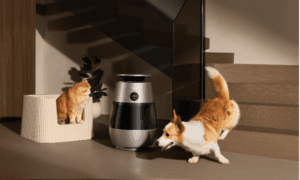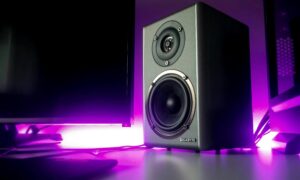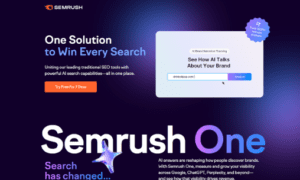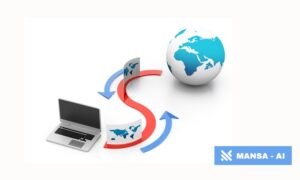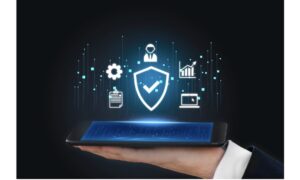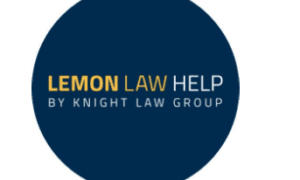Did you know that nearly 90% of nurses use technology daily? As healthcare evolves, so does the role of technology in nursing. Tech tools are central to delivering quality care, from patient records to virtual consultations. In this article, we’ll explore various types of technology nurses utilize, including electronic health records (EHRs), telemedicine platforms, and patient monitoring systems. Understanding these tools not only enhances efficiency but also improves patient outcomes, helping to support an increasingly overworked healthcare system.
Why Technology Matters in Nursing
Technology has made a notable difference in nursing, improving patient outcomes, efficiency, and communication. With tools like electronic health records, they can quickly access vital patient information, leading to faster decision-making and reduced errors. Continuous monitoring systems provide real-time patient health data, allowing for timely interventions that enhance safety and recovery.
Technology encourages collaboration among healthcare teams, ensuring everyone is on the same page. This is especially crucial as healthcare systems face increasing burdens from rising patient numbers and staffing shortages. By leveraging technology, nurses can work smarter, integrate care more effectively, and ultimately provide better patient services.
Types of Technology Nurses Use Daily
Electronic Health Records
EHRs streamline patient charting and allow nurses quick access to patient information. They reduce errors and duplication of tests, making the documentation process more efficient. EHRs enable better tracking of patient histories, which is essential for providing personalized care and ensuring all team members have the latest information.
Vital Sign Monitoring and Wearable Devices
Vital sign monitoring and wearable devices ensure continuous observation of patients, tracking metrics like heart rate and oxygen saturation. Post-COVID-19 pandemic, remote patient monitoring has become increasingly crucial, allowing healthcare providers to manage patient health from a distance and respond promptly to changes in vital statistics, enhancing patient safety.
Smart IV Pumps and Medication Administration Technology
Smart IV pumps deliver precision dosing, reducing the risk of medication errors. With barcode scanning technology, nurses can ensure that the right patient receives the correct medication at the proper dosage. This blend of automation and accuracy helps maintain high safety standards in medication administration, which is vital in clinical settings.
Mobile Devices and Nursing Apps
Mobile devices and nursing apps provide real-time updates and quick access to essential tools. Nurses can use apps for drug references, clinical protocols, and dosage calculators on the go, enhancing decision-making in fast-paced environments. This technology empowers nurses with information at their fingertips, fostering confidence in their clinical judgment.
Telehealth and Virtual Care Tools
Telehealth and virtual care tools facilitate video consultations, allowing nurses to assess and triage patients remotely. This technology is especially valuable for reaching patients with difficulty accessing traditional services. It enhances care continuity, reduces hospital visits, and offers a more flexible approach to patient management. It’s a growing part of nursing, and many online MSN FNP programs now include training in telehealth tools and strategies.
Clinical Decision Support Systems
Clinical Decision Support Systems (CDSS) provide nurses with alert systems and evidence-based recommendations at the point of care. These tools assist in diagnostic accuracy, helping nurses make informed decisions quickly. Integrating data and research, CDSS helps improve patient safety and outcomes while enhancing overall care quality.
Workplace Communication Tools
Workplace communication tools like Vocera and secure messaging apps streamline coordination among interdisciplinary teams. They enable quicker communication regarding patient needs, all while ensuring confidentiality. With instant access to team members, nurses can collaborate effectively, enhancing workflow and improving overall patient care in fast-paced healthcare environments.
Patient Education Technology
Patient education technology, including tablets and interactive screens, provides valuable resources for educating patients and caregivers. These tools can break down complex medical information into understandable formats, ensuring patients are well-informed about their conditions and treatments. This accessibility empowers patients to take an active role in their health management.
Benefits and Challenges of Nursing Technology
The benefits of nursing technology are substantial, improving speed, accuracy, and overall patient outcomes. Technology streamlines workflows, allowing nurses to spend more time with patients and less on administrative tasks.
However, challenges exist, including a steep learning curve, alert fatigue from constant notifications, potential tech outages, and privacy concerns regarding patient data.
The Future of Nursing Technology
As we look ahead, exciting trends like artificial intelligence, robotics, smart beds, and augmented reality for training are poised to transform nursing care. These innovations promise to enhance patient monitoring and education while assisting nurses in delivering care more efficiently.
Continuous adaptability and training will be vital for nurses to harness the potential of these improvements.
Nursing has always been about compassion and care, but now, it’s also about being tech-savvy. From EHRs to smart pumps, today’s nurses rely on technology to work efficiently and safely. As tools evolve, so does their role. As they continue to embrace these advancements, nurses will play an increasingly vital role in shaping the future of healthcare in a tech-driven landscape.


